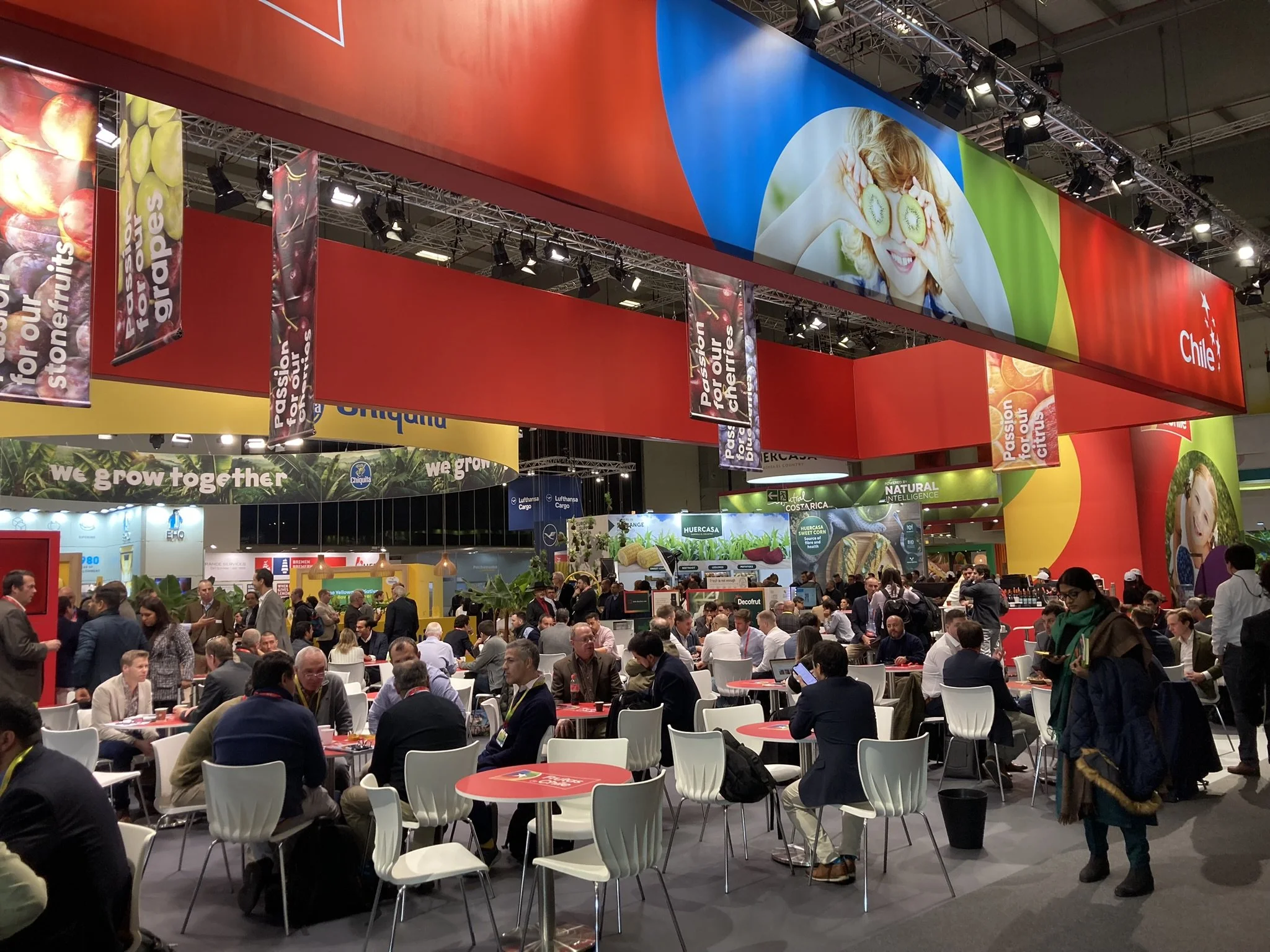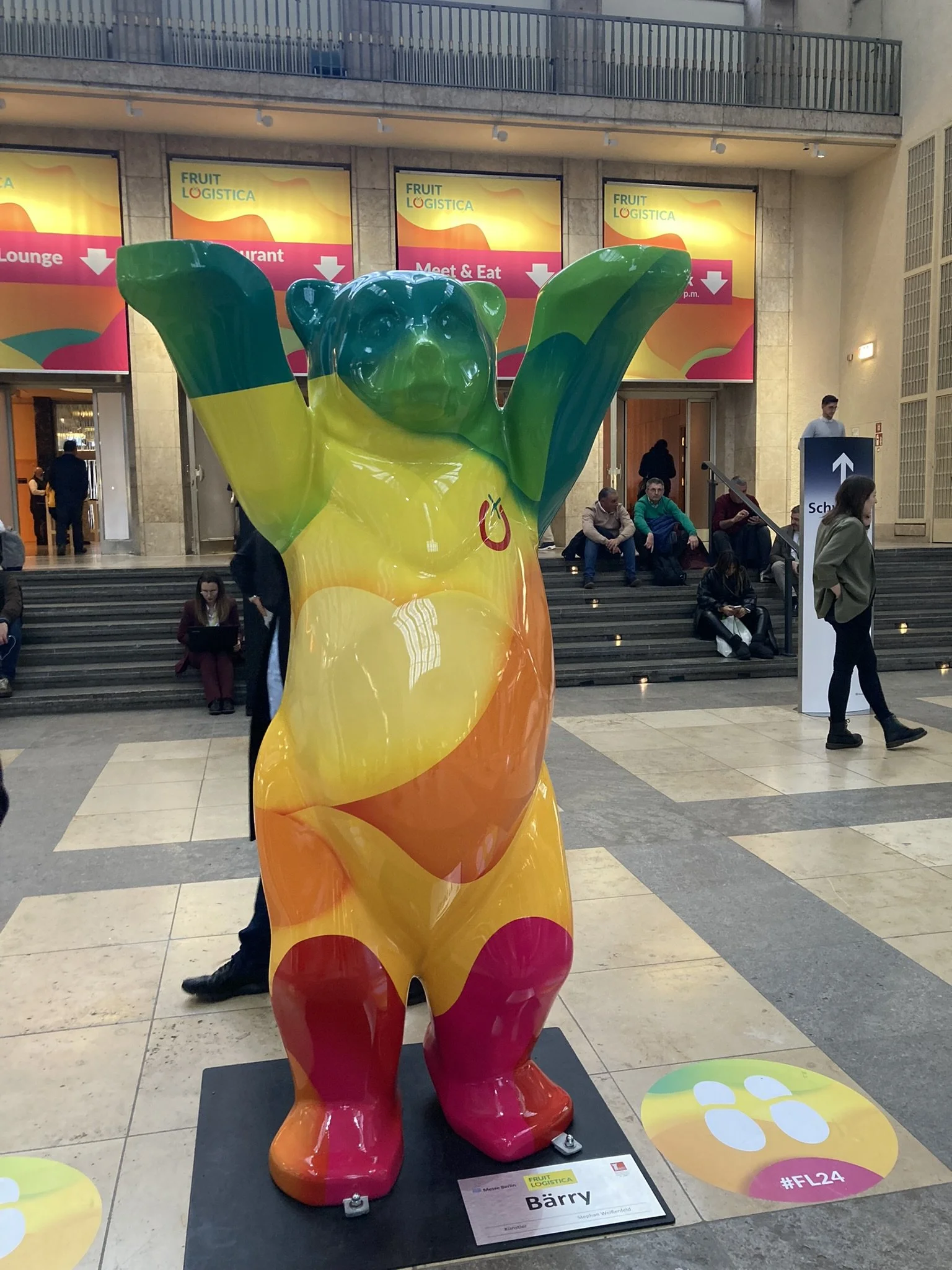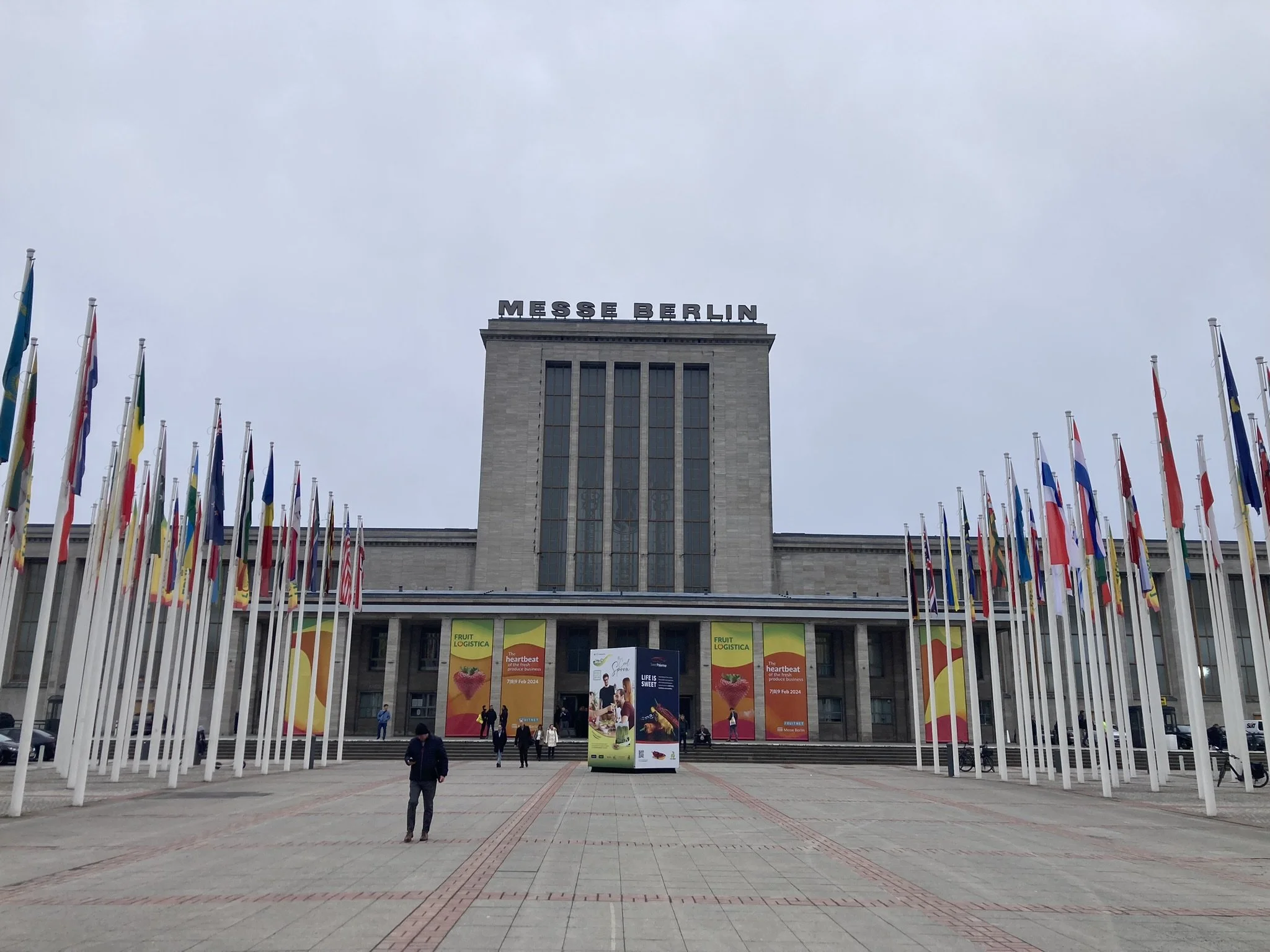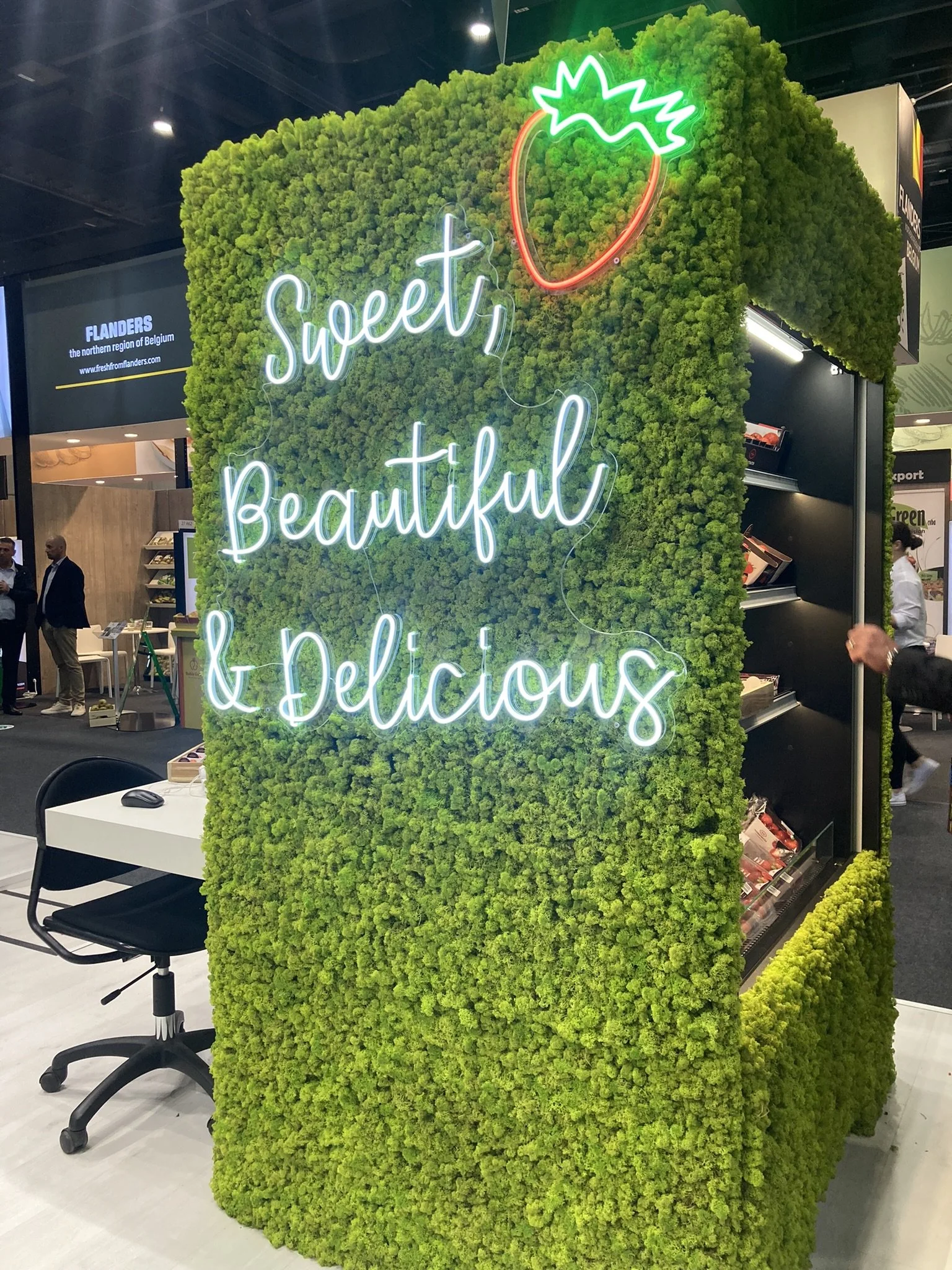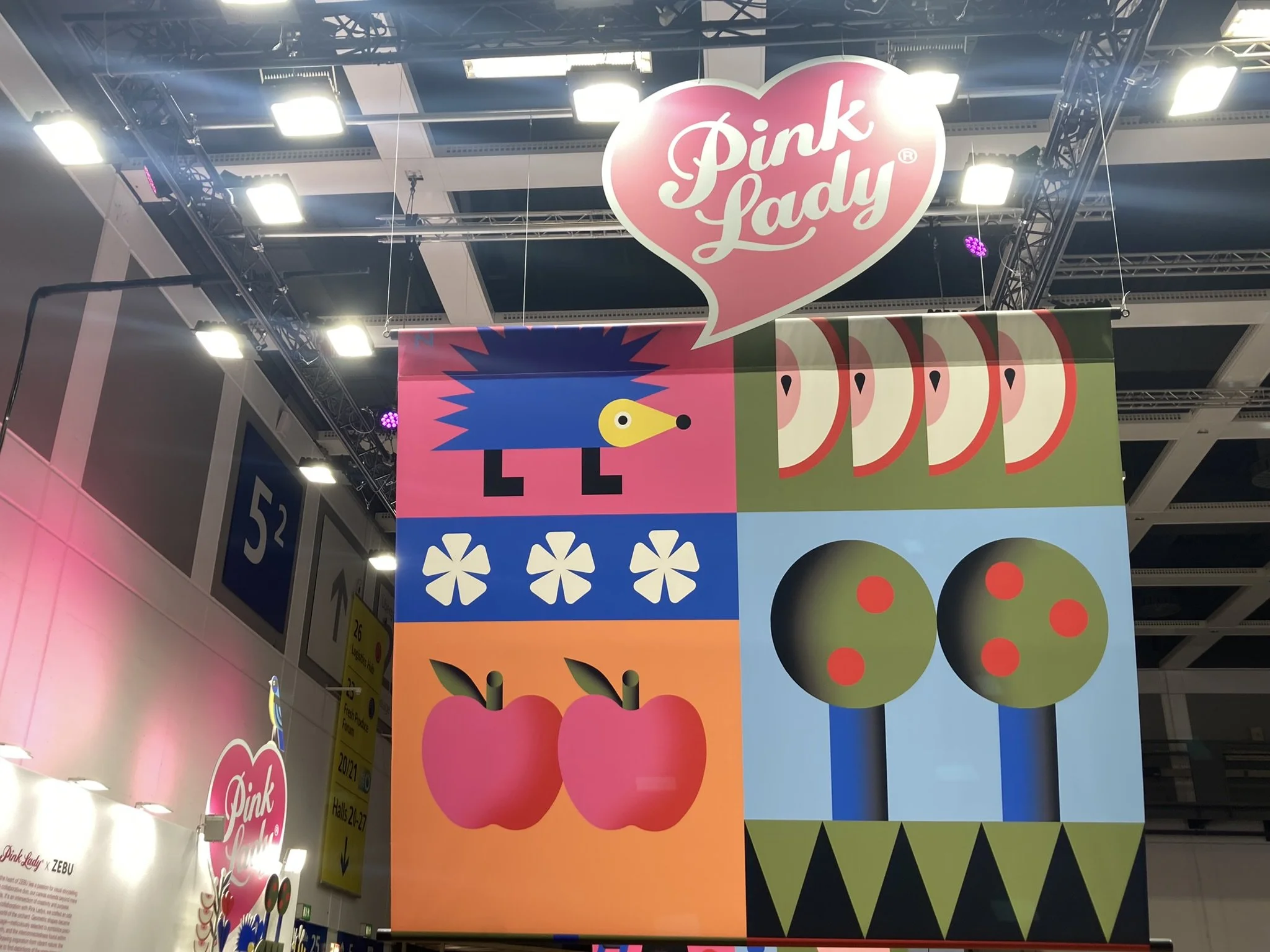A galaxy of possibilities.
How does NZ agritech compete in global markets? Go for the niches, and make good friends.
This February 2024, I’ve been in Berlin for FRUIT LOGISTICA, a massive trade fair on the calendar for the fresh produce industry and its access to the global market. The first talk at the Future Lab was 'A Galaxy of Possibilities' - what a way to start, and to capture the feeling of the event. In the vast expanse of the Berlin Messe, spanning an impressive 23 football fields of space split broadly by country/region Fruit Logistica is like the UN of fruit and veg. Exhibitors from over 90 countries convene to showcase fresh produce across all categories - from apples, tomatoes, berries and grapes. The complete range of products, services and technical solutions from every part of the value chain - whether in seed, fruit and vegetable development or packaging, logistics, smart cropping and automation are represented. Some great kiwi organisations are walking the floor, and others are exhibiting including WayBeyond, Hectre - Orchard Management Software, Zespri International, The New Zealand Institute for Plant and Food Research Limited and Wyma Solutions.
Fruit Logistica is not a marketplace. The underlying narrative here is one of innovation and business: more than 80% of the international trade visitors are decision-makers. Exhibitors fork out tens of thousands of euros to create meeting places which have a carefully designed invitation-only feel to them - it’s the culmination of many months of meeting scheduling, where earnest groups of people engage and do business. The sheer scale of the event makes you sit up and take notice of the size, reach and sophistication of the global industry. It immediately begs the question: how do you get heard above the noise?
Comparing apples with apples - standing out
The personality of produce and the producer is really on show here. Fruit varieties take on a pseudo-celebrity feel, with their own back stories and in some cases, plinths and glass cases. A potent example of this is in the apple category. Here, the Pink Lady® Europe brand has slam-dunked it. A 3-d art installation by German artist duo Zebu is impossible to miss and has been designed to capture the brilliance of Pink Lady® apples:“ they’re bright and harmonious and reflect the lively spirit of the orchard and the diversity of its ecosystem”.
Bookmarking the stand are stacks of branded shopping bags, which people grab in twos and threes - the must-have item of the show. Over at Zespri, characterful soft toys in the shape of kiwifruit are on display behind a busy Michelin-starred chef who’s creating smoothies and treats to demonstrate the versatility of kiwifruit: a premium quality product, that’s also accessible and fun. At the Future Lab, the story of Onix™ is unveiled. “Slight hypnotist. Spell of taste. Body protector. Juicy soul.” Onix™ is an orange - a beautiful natural mutation with a purple and orange skin. And who could forget zero CO2 emission, Greek-sun-flavoured tomatoes?
What does all this mean for NZ agritech?
When people hear you’re from New Zealand they invariably give a broad smile, raise their eyebrows and give a kind ‘woah’. This reaction means: “your country is beautiful (I’d love to visit)” and “it’s far away”. While being a beautiful far away place has its advantages, it now also comes with some baggage: a carbon footprint and questions that must be answered about the ease of after-sales support particularly for technology products.
Overlaying the sheer scale of competition, choice and capital at a trade show like Fruit Logistica with NZ’s areas of advantage in food systems/agritech, the conclusion I come to is that to be competitive into the future NZ should focus on (1) niches and (2) innovation partnerships - with a focus on leverage. On the first, I wholeheartedly agree with Sir Paul Callaghan:
“where we excel are in the niches, the little pieces of the world of technology where the big players can’t be bothered, but which, because of the 500 times factor, can be huge for us”.
The ingredients for success are first, a laser focus on the problem to be solved. Second, a deep understanding and sympathy of the context (cultural, structural, economic). Finally, relationships. The last creates space for experimentation, serendipity, and trust - and takes an investment of time. Together, these have the potential to create a competitive moat for NZ solutions.
Additionally, they provide:
Access to expertise: partnering with international firms, research institutions or tech hubs unlocks access to expertise, knowledge and resources that may not be domestically available. Collaboration can create innovation processes and bring cutting-edge technologies to NZ.
Access to markets: strategic partnerships can facilitate access to new markets, customers and distribution channels, helping NZ companies penetrate international markets more effectively and compete on a larger scale.
Sharing risk: collaboration with partners can make innovation initiatives more manageable and increase the likelihood of success by sharing financial, technical and regulatory risks.
Network effects: partnering with other innovative organizations can create synergies and network effects, fostering a culture of innovation within NZ’s ecosystem.
Kiwis need to be curious learning machines with a reputation for collaborating for executional excellence. Curious about the world, about the challenges facing both our growers and humanity more broadly. We must also be open to partnering at all stages of the growth cycle and view partnership and collaboration and force multipliers, rather than a zero-sum game.
